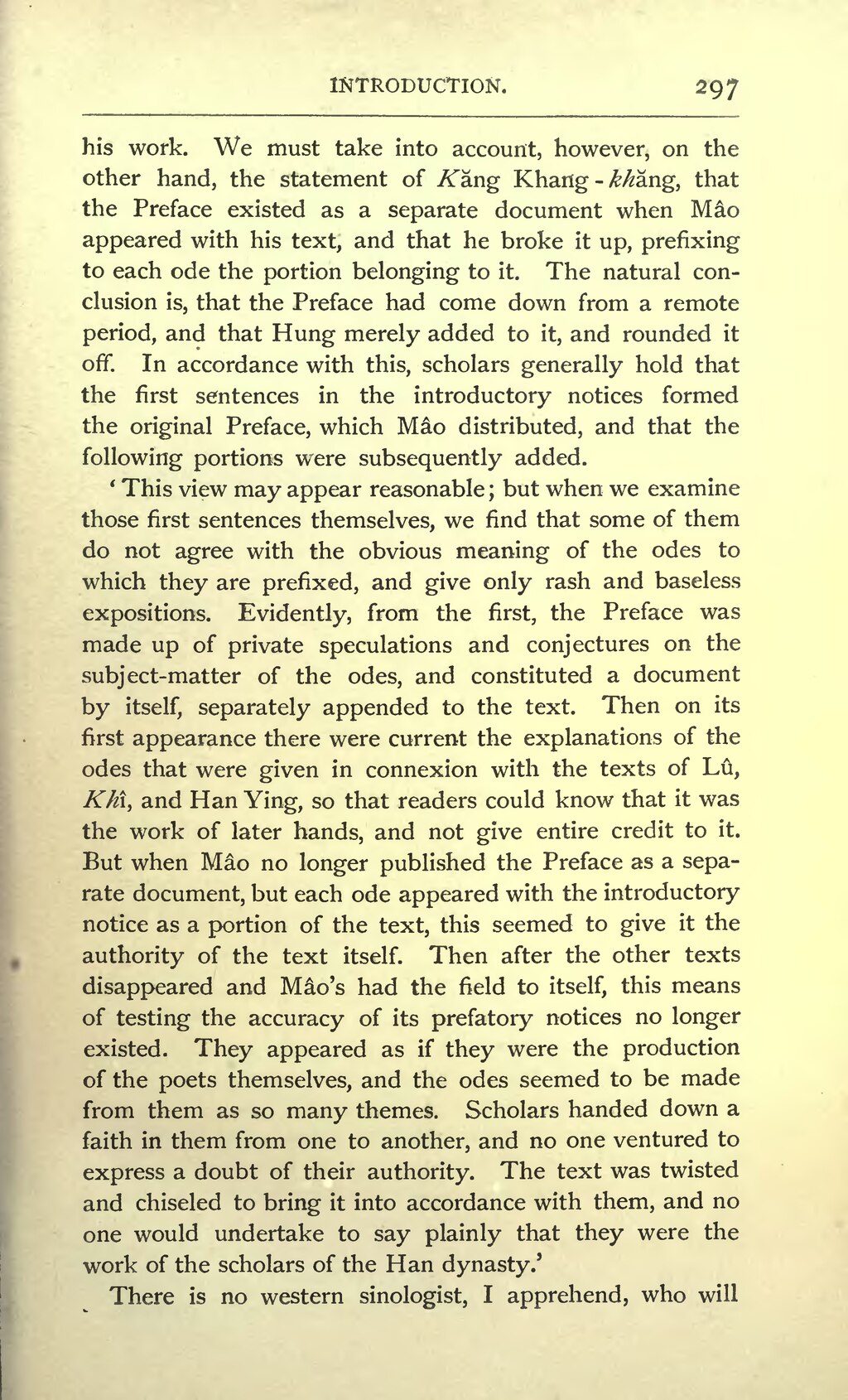his work. We must take into account, however, on the other hand, the statement of Kăng Khang-khăng, that the Preface existed as a separate document when Mâo appeared with his text, and that he broke it up, prefixing to each ode the portion belonging to it. The natural conclusion is, that the Preface had come down from a remote period, and that Hung merely added to it, and rounded it off. In accordance with this, scholars generally bold that the first sentences in the introductory notices formed the original Preface, which Mâo distributed, and that the following portions were subsequently added.
'This view may appear reasonable; but when we examine those first sentences themselves, we find that some of them do not agree with the obvious meaning of the odes to which they are prefixed, and give only rash and baseless expositions. Evidently, from the first, the Preface was made up of private speculations and conjectures on the subject-matter of the odes, and constituted a document by itself, separately appended to the text. Then on its first appearance there were current the explanations of the odes that were given in connexion with the texts of Lû, Khî, and Han Ying, so that readers could know that it was the work of later hands, and not give entire credit to it. But when Mâo no longer published the Preface as a separate document, but each ode appeared with the introductory notice as a portion of the text, this seemed to give it the authority of the text itself. Then after the other texts disappeared and Mâo's had the field to itself, this means of testing the accuracy of its prefatory notices no longer existed. They appeared as if they were the production of the poets themselves, and the odes seemed to be made from them as so many themes. Scholars handed down a faith in them from one to another, and no one ventured to express a doubt of their authority. The text was twisted and chiseled to bring it into accordance with them, and no one would undertake to say plainly that they were the work of the scholars of the Han dynasty.'
There is no western sinologist, I apprehend, who will